Pushkar to Jaipur
After a fascinating stay at Pushkar and our visit to the famous Camel Fair (previous blog), we were up and ready for another early start for our bus trip to Jaipur.

Pushkar to Jaipur – 150km’s – 4 hours bus ride
It was a moderately comfortable Scania with AC so all was not so bad for our 4-hour trip. It was thankfully a rather uneventful ride (which is always a good thing) to Rajasthan’s capital city.
Our accommodation was a little way out of the city which was good for the noise and pollution factor. After settling into our rooms, we were picked up again and dropped off in the city centre, inside the city walls, for a Walking Tour around the Pink City of Jaipur.
Why Pink City?
Jaipur is the largest city of Rajasthan with a population of 3.1 million.
Pink is the dominant colour scheme of its buildings. History tells us that in 1879, Pince Albert and Queen Victoria visited Jaipur and pink was considered the colour of hospitality. The King at the time had the whole city painted pink to welcome the royal guests. The colour has stuck ever since.
Sensory Overload
Many of us were still recovering from a cold that had swept through the group so we were getting rather jaded by this stage. The noise, heat, smell, rubbish littered streets and crowds took some perseverance to tolerate. It’s times like this that you need to push through that fatigue and embrace your surroundings and accept that this the ‘real India’.
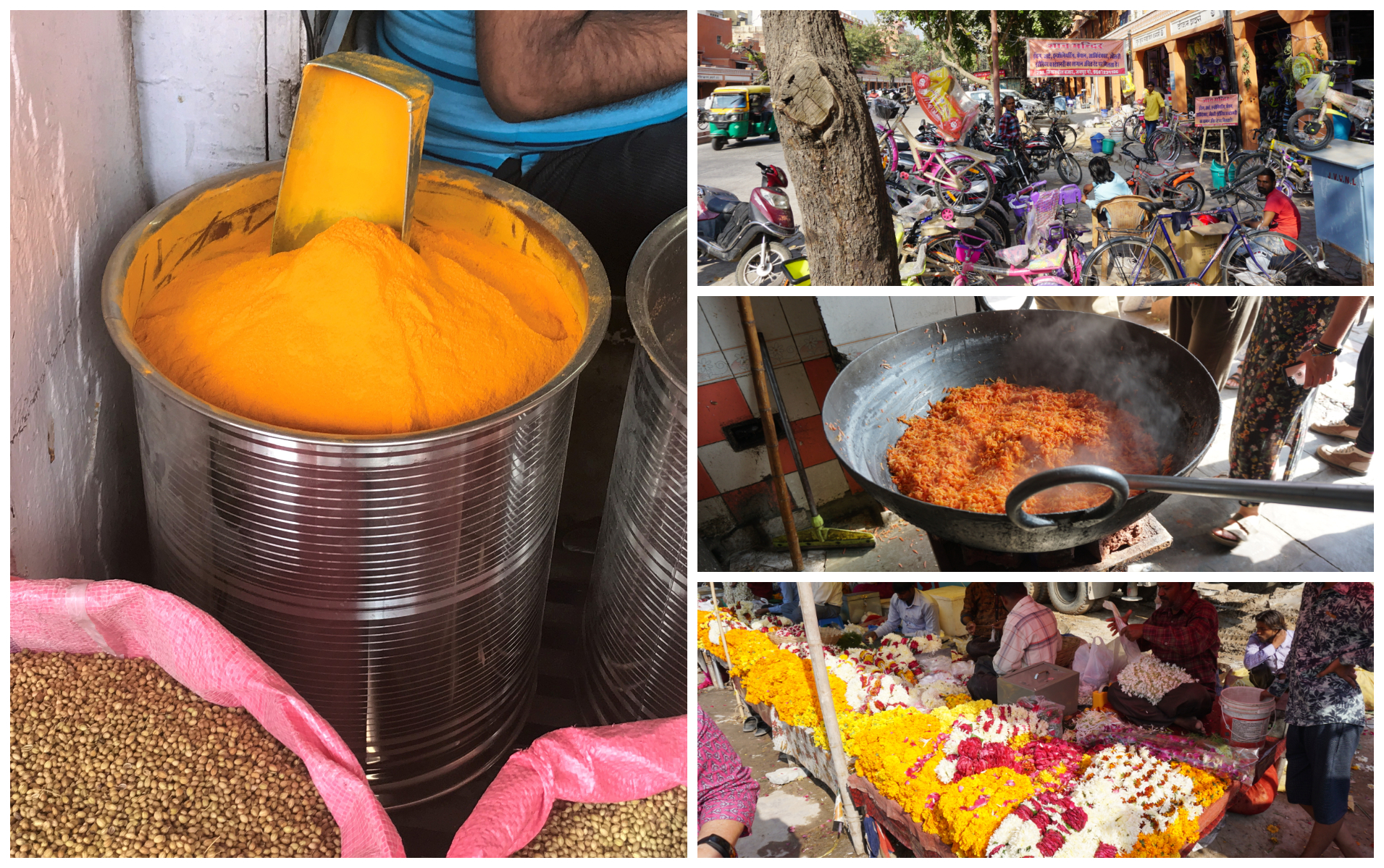
Soaking it all up – the colours, smells, noise and crowds
It was another sensory overload as we passed markets and stalls with big sacks of every spice imaginable. The colours and smells of the aromatic ingredients that go into Indian cuisine were all displayed proudly by the stallholders.
What is Jaipur Famous For?
Amer Fort
Amber Palace, Amber Fort, Amer Palace and Amer Fort are all different names referred to the same place.
Amer is a town is located 11 km from Jaipur, located high on a hill and built back in 1592. It is the principal tourist attraction in Jaipur.
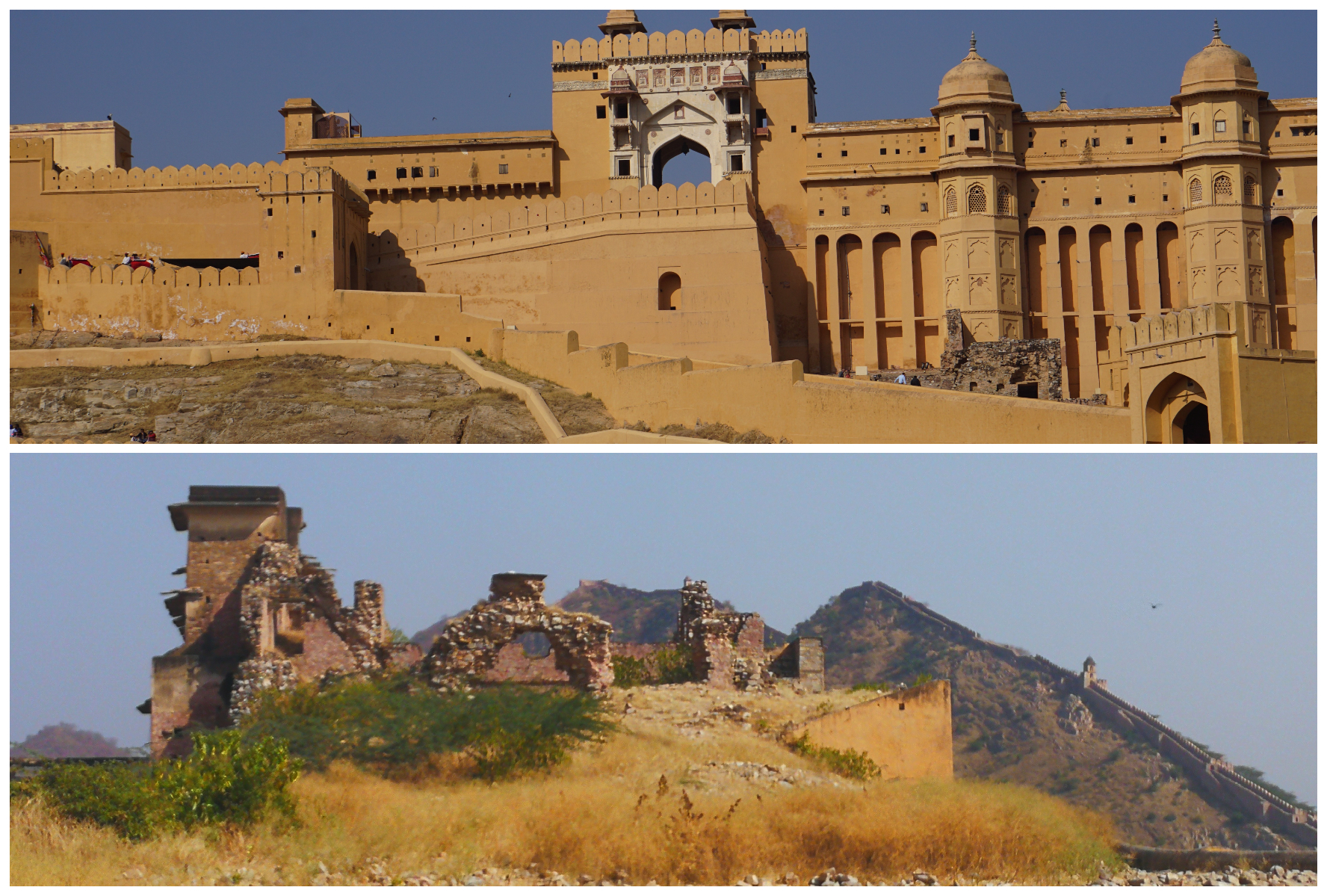
The imposing fort looms out of the landscape atop a large hill
What a magnificent fort, comprising of an extensive palace built from pale yellow and pink sandstone, and white marble. It is so large that it is divided into four main sections, each with its own courtyard.
Sadly there were many tourists taking advantage of the elephant rides up the hillside path to the entranceway to the fort. It will be a great day when this type of animal abuse is outlawed for good. But as long as tourists pay for the attraction, then the practice will continue. Much to the detriment of the animal. We were all more than happy to trudge up the hill to enter the Sun Gate (main gate).
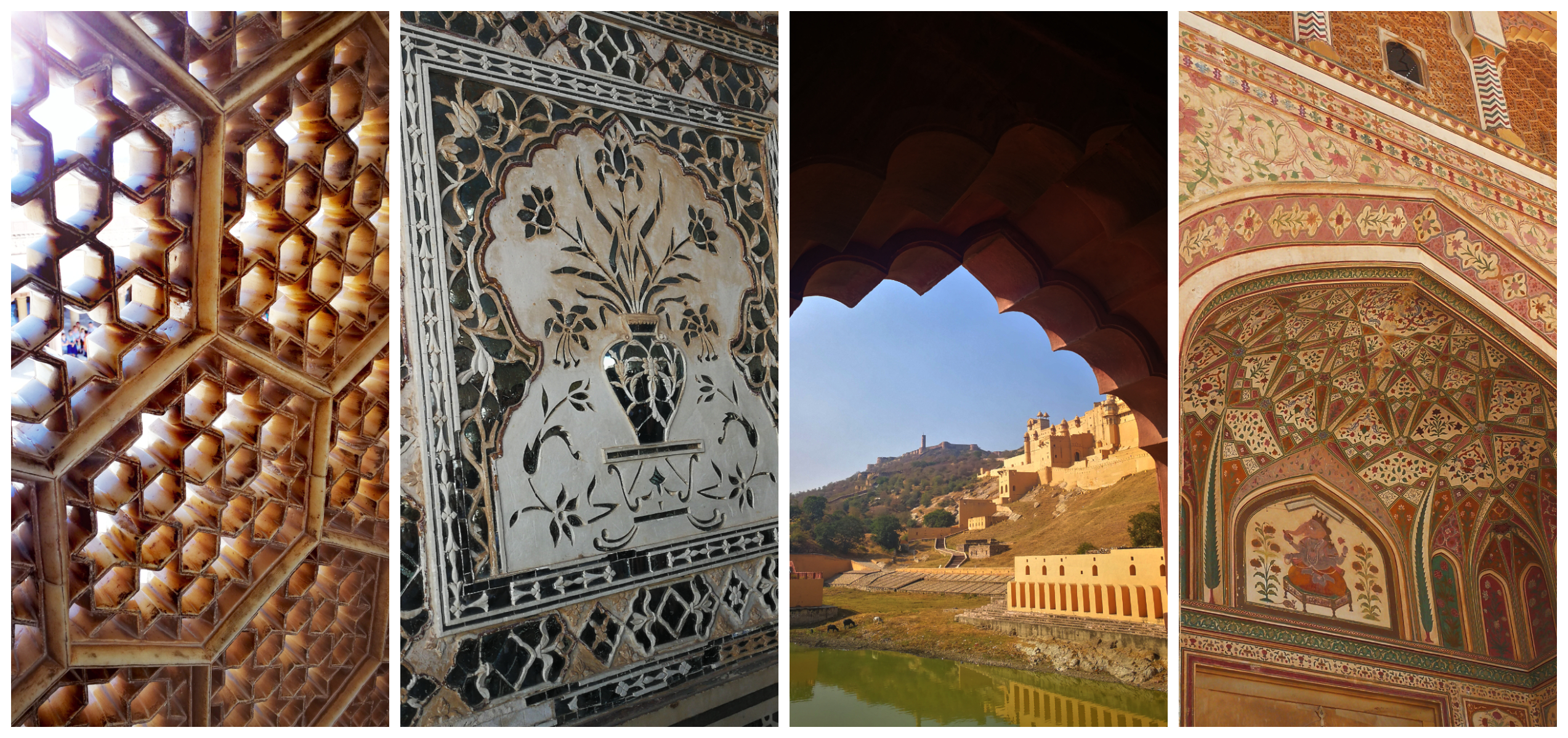
So many styles and features adorn the entire structure
Photos cannot do the architecture and decorations justice. Everywhere we looked, we were treated to beautiful frescoed arches, inlaid panels and multi-mirrored ceilings. Carved marble panels were both delicate and quirky.
The views from the palace over the picturesque Maota Lake seems so serene and miles away from the hustle and bustle that we knew went on outside the fort walls.
Man Sagar Lake
The Jal Mahal (Water Palace) is located in Man Sagar Lake. It was supposed to be a duck-hunting lodge for the maharajas back in the 18th century. But nature had other plans, it seems.
Four levels of the Water Palace submerge underwater when the lake fills up and only the topmost levels are visible.
This impressive monument, is one of the most visited and photographed sites in the country. It was in a state of decay not too long ago after being abandoned for more than two centuries.
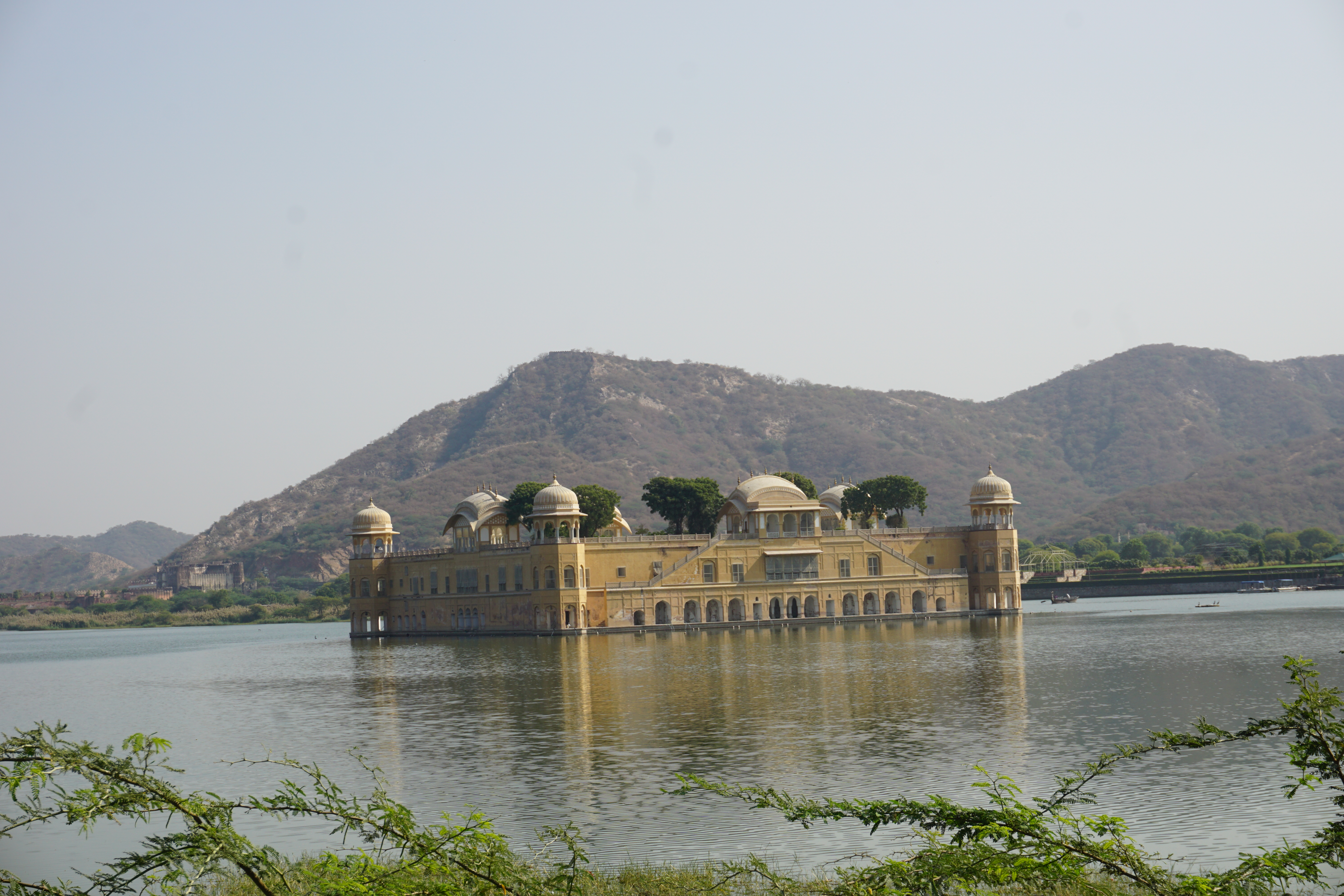
The Water Palace seems to float on the waters of Lake Man Sagar
Hawa Mahal
Back inside the walls of Jaipur sits its most distinctive landmark – the Hawa Mahal.
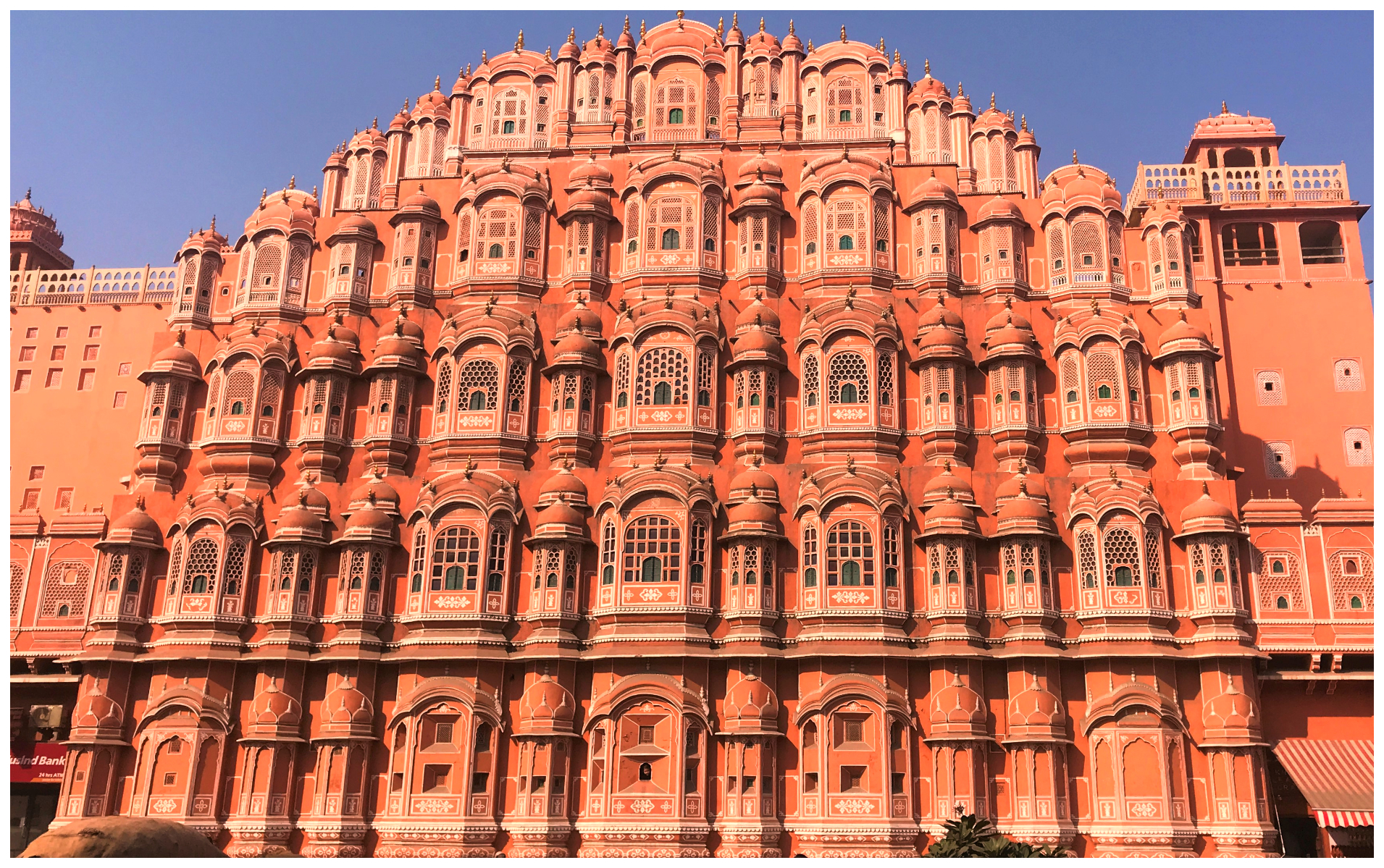
So many windows for the ladies of the royal family to peer out of to the streets below
This building was constructed in 1799 it looks like an extraordinary pink-painted, delicate honeycombed hive. It’s 5 storeys high and was built purely for the ladies of the royal household. This was so they could watch the life and goings-on of the city without leaving the confines of their home.
Block Printing
While block printing most likely originated in China over 4,500 years ago, it is India where the hand-block printed fabric continues to express their expertise to the world.
You can still find in-home workshops scattered throughout Jaipur where ‘chippas’ continue day after day to stamp lengths of cotton fabric with colour using hand-carved wood-blocks. They were taught this trade by their parents, who were, in turn, were taught by theirs. Each generation working exactly like the one before. This has been going on for over 300 years.
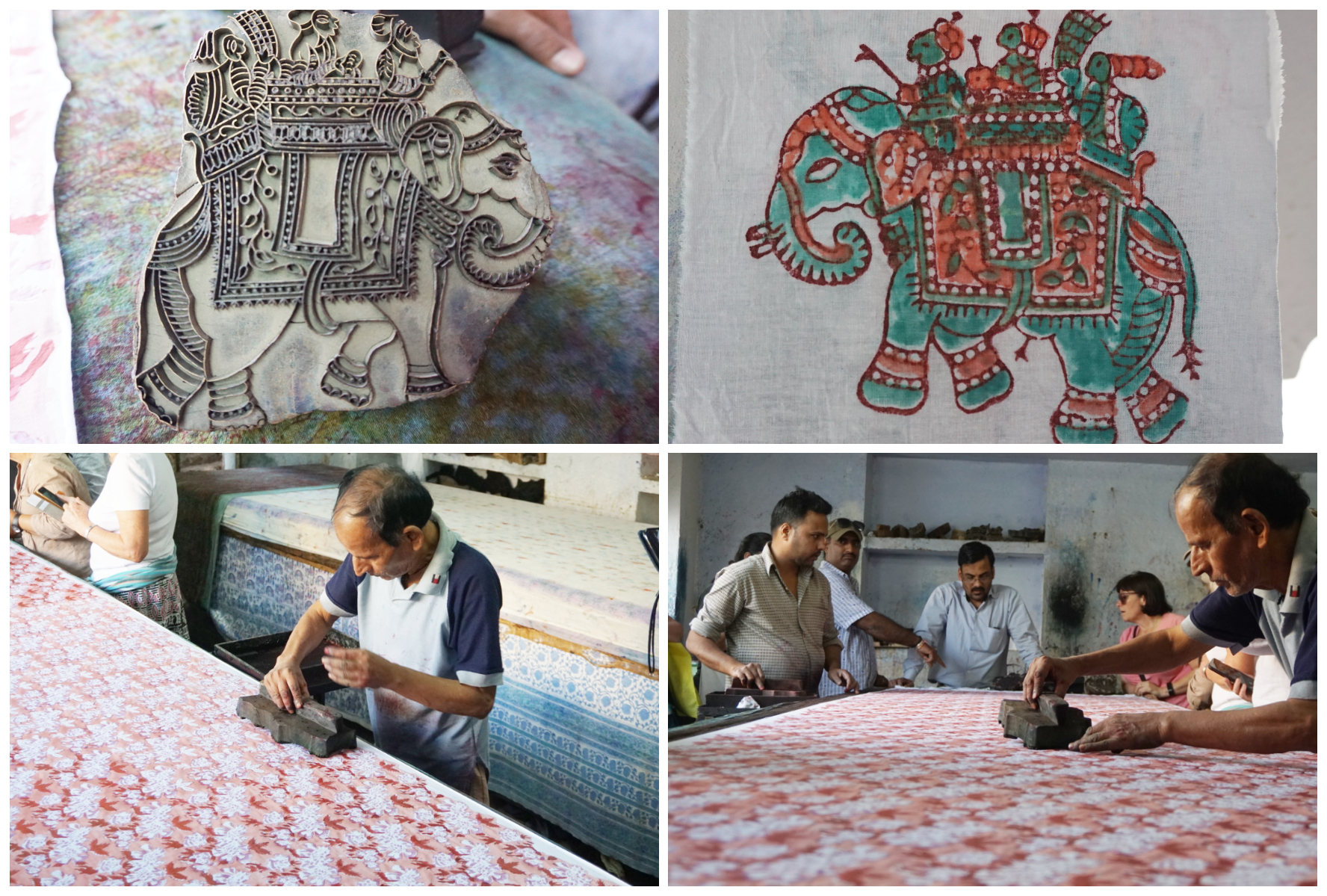
(Top) the handmade wooden block and the finished product (Bottom) watching the block painting was quite mesmerising
We visited a workshop where we could watch how they patiently turned a length of material into a work of patterned art. All done by hand at an excruciatingly slow pace.
Some members of the group took advantage of the opportunity to purchase some ready-made clothing. Orders could be placed for a custom made item. Scotty loves his block printed shirt. It looks great and it will always hold special memories.
Hindi Film Watching
A ‘must-do’ when visiting India, is to go and see a Hindi movie. In Jaipur, the place to go and do this is the Raj Mandir. This opulent cinema looks like a huge pink cream cake.
It was nearing 3 pm and we were looking forward to escaping the heat and to get off our feet for a bit. We entered the auditorium and circular foyer which kinda looked like a cross between a temple and Disneyland.

The very grand cinema and I think I knew what was going on in the movie!!
We were about to be treated the latest Bollywood movie release – The Thugs of Hindustan. Thankfully the theatre wasn’t too full. No English at all and no subtitles. We could still get the gist of what was going on. As you would expect, there was even some pretty raunchy, modern Bollywood dancing throughout just to keep my interest up.
Apparently, if the theatre is full, it can get quite raucous and is an entertainment in itself.
We spent two nights in Jaipur and it was now time for our next destination of Abhaneri.
Abhaneri
Well, no trip to India would be complete without a trip on a public bus. It took us nearly 3 hours to travel from Jaipur to Abhaneri. We were seated near the rear of the bus. Wedged between bags of cauliflowers and sitting with families returning home from a wedding.

Our bus was a thing of beauty, our fellow passengers and masks helped with the dust!
All the windows of the bus were open to let in air (and dust). Word to quickly close them spread down the aisle. A lady up the front was about to lose the contents of her stomach out the front side window! Crisis averted as Scotty managed to close ours in time!
We unceremoniously disembarked from the bus in what seemed like the middle of nowhere. Ten minutes later a convoy of jeeps arrived for us to pile into and take a 15-minute drive to our accommodation. Our Guesthouse was a lovely oasis. Seeing veggie patches and grass was a rarety on this trip.
What’s a Baori?
Abhaneri is famous for its Chand Baori. This is a Stepwell where you descend sets of steps to get to the water level far below.
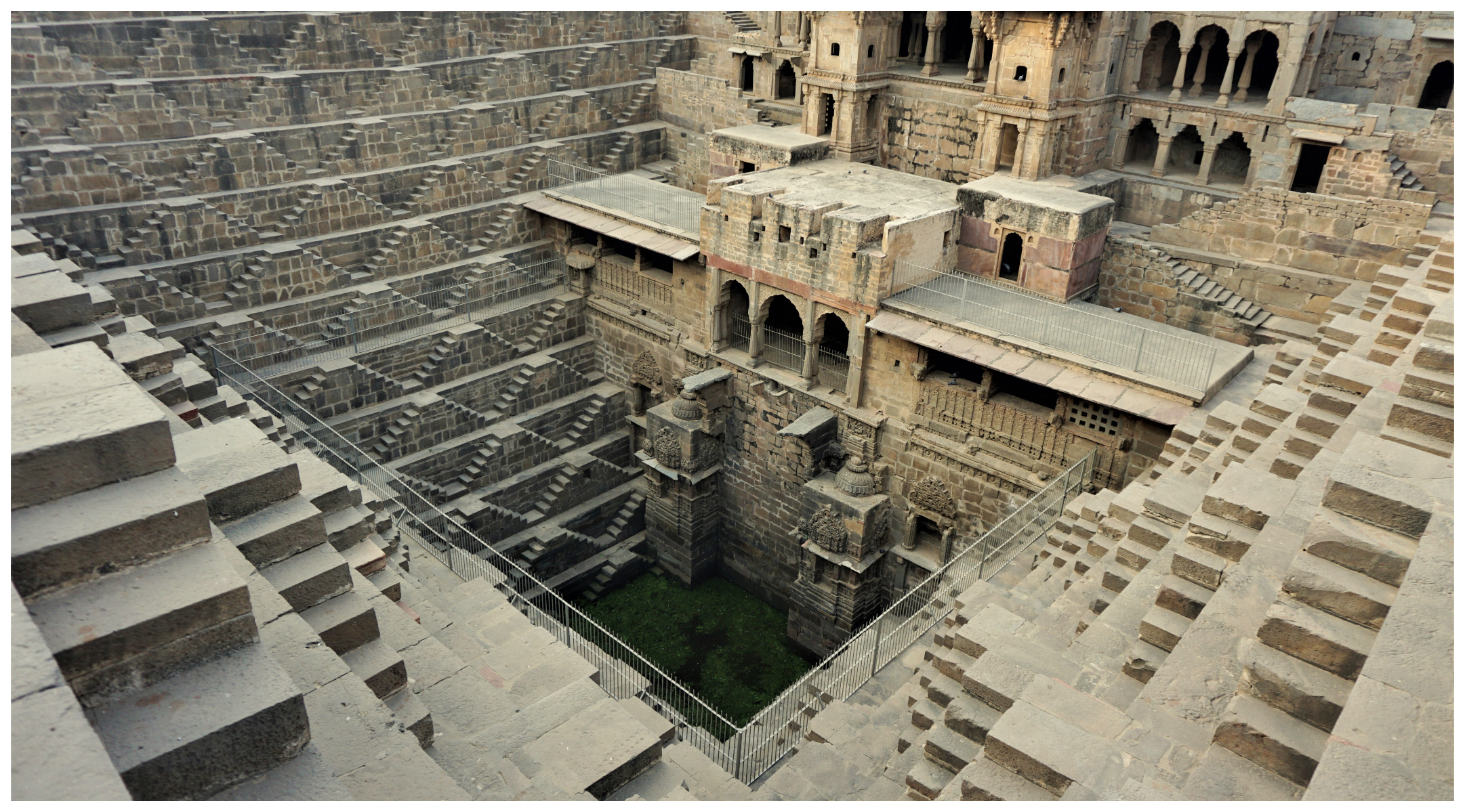
the largest and best-preserved Stepwell in India
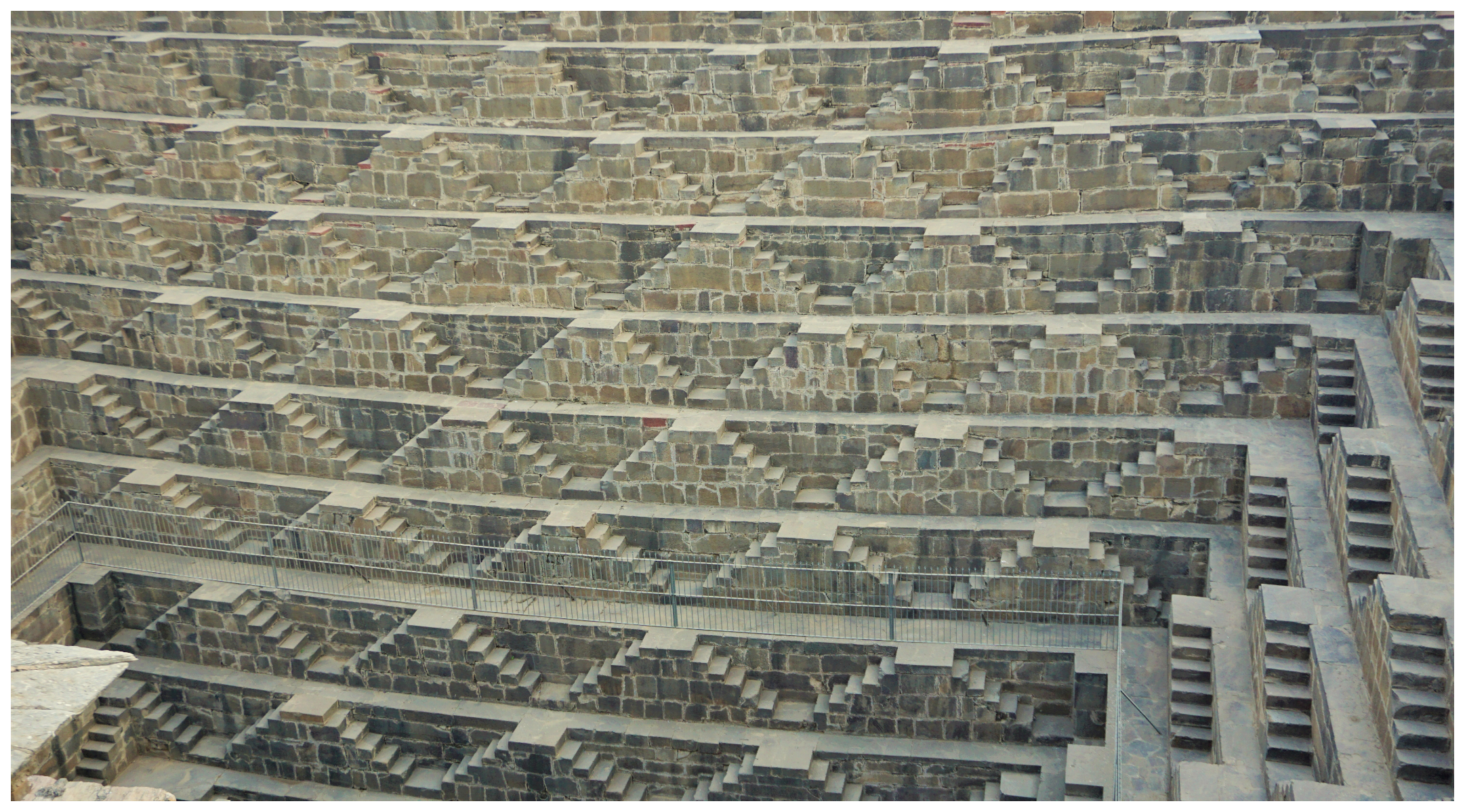
The zig-zagging, narrow steps leading down to the well
It was amazing to gaze down into the deep hole where the villages negotiated the perilous steps, zig-zagging down to reach the well at the bottom.
The pattern was quite mesmerising and I can understand how it is one of the most popular Instagram shots. You are unable to enter the Stepwell. The narrow steep steps would be quite a hazard for the distracted, camera-welding tourists.
One side of the well has a pavilion and was a resting room for the royals.

Watching the sunset from a neighbouring temple was the perfect finish to the day
Click on the link below to view a video of our highlights.
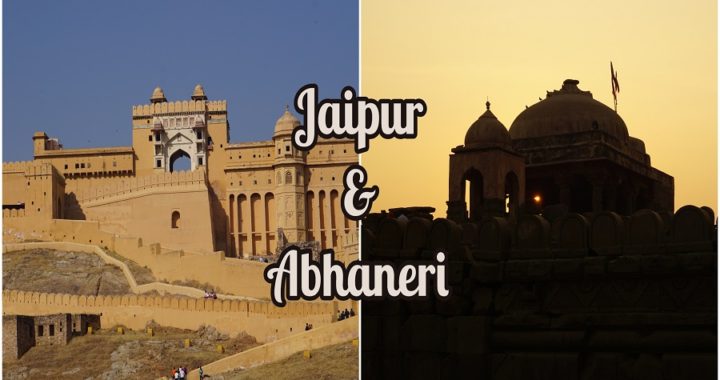
You write amazing posts – congratulations. I really enjoyed this one was we were in Jaipur 10 months ago – incredibly imposing architecture in the Amber Palace. I didn’t take one photo of the poor elephants lugging tourists around, and like you hope an end comes to this type of animal treatment in the near future. We both have block painted elephants on the backs of the t.shirts we wore that day – LOL – fascinating process. Thank you for bringing back so many memories – a fantastic read. 🙂
Awwww thanks Joycee, that means a lot coming from you. I’m sure you know the pain of trying to play catch up with blog writing. We were there nearly a year ago so have to get in the right space and to relive it all to write it down.
You are a great author, This is an interesting article. Jaipur is one of the most famous historical palace in India. There are lots of beautiful forts and restaurants. Here Jaipur’s best and luxury (Empyreal Club) restaurant. Thanks for sharing keep share more!
thanks Sam, loved Jaipur!